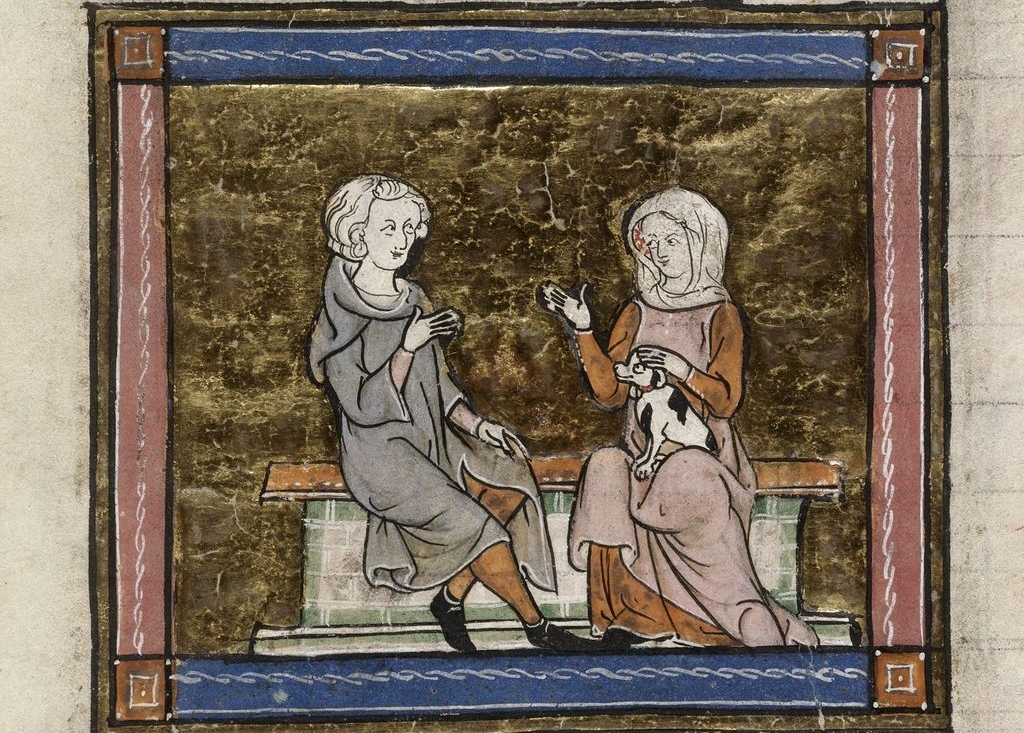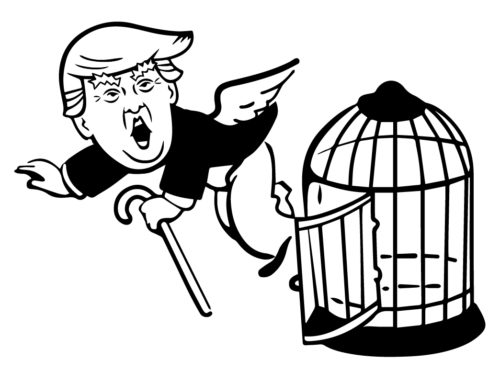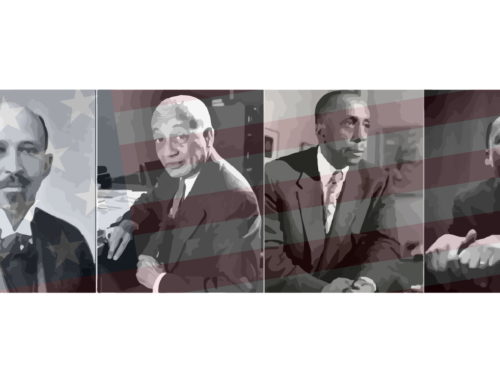by Glen Paul Hammond
Hope in heaven, feet on the ground.
– English Gentleman’s motto, from the 17th century.
In the West, traditional masculinity is under attack. Many of the virtues that come under its code of conduct were, at one time, promoted as aspirational virtues for boys, taught and supported by both parents in a household. Increasingly, however, these historically developed traits have been the target of concerted efforts to undermine them. The American Psychological Association (APA) guidelines are the most recent example of this, arguing, among other things, that traditional masculinity limits males’ psychological development, increases the likelihood of violence against women, and produces gender role conflict, which manifests itself in such things as restricting a man from both expressing emotion and care for others (3). This article means to examine the tradition in traditional masculinity, to present an understanding of the source and function of that tradition’s development, and, through this, to gain insight as to why it has become a target.
When Harvard psychologist, Steven Pinker, was assessing the APA guidelines, he noted that one of the study’s major flaws was that it did not acknowledge the evolutionary or biological root causes of male behavior (Edsall). Pinker pointed out, for example, that the word “testosterone” appears nowhere in the report” (Edsall). His critique went on to explain that the APA’s skewed lens was driven by a narrative invested in viewing masculine traits negatively, and that, due to its politicized perspective, it failed to observe even the possibility that these same traits were part of “a huge and centuries-long change in Western history” which actually served to civilize male behavior (Edsall). These observations by Pinker are especially important since they point to both the origin and functionality of a code of conduct that became the Western view of masculinity. Such implications assert that, over time, society realized that the biological realities of the male species could be best and most productively served through the attainment and development of specific virtues. These virtues embodied what became known as the gentleman’s code.
In his book Tournament, David Crouch explains that one of the earliest ideals of a medieval man was encapsulated in the term preudomme, from the Latin “upstanding fellow” (149). As part of an aristocratic warrior society, a preudomme was expected to be hardy, tough, uncomplaining, and loyal but not subservient; he was valued for his independence, sound judgment, and willingness to speak truth to power (Tournament 149-50). These men had to make their way around “greater men” and so, according to Crouch, they also had to be amiable, confident, and modest (Tournament 150). Preudommes were the knightly class before that class was considered noble. The general respect that the traits of these men elicited from those above them led to their upward mobility in the social order; this progression, however, necessitated the acquisition of a different set of skills that would allow them to successfully negotiate more diverse social settings. As a result, a violent world that depended on the martial qualities of its soldiers now found a motivational means to encourage those same men to channel their energies into behaviors that also served a functional purpose off the battlefield. Since the social milieu they were becoming a part of was populated by both lords and highborn ladies, the practical sensibilities of the preudomme needed to adopt courtly manners, which would become known as courtliness.
Combining the martial world with the courtly world was encapsulated in the concept of chivalry—meaning, “What the horse soldiers did” (Marshal 31). In battle, a horse soldier controlled an instinctually unruly mount to utilize his skills in the art of war; likewise, he employed the same kind of control over his own unruly instincts to best display the courtesies that royal courts demanded. As Crouch puts it, “his aggression and competitiveness was channeled into the tournament and warfare” (the tournament being a training ground for war), but once he put off his armor and sword, “he could lapse into the companionship of the household with ease” (Marshal 43).
A demonstration of such self-control involving these two opposing spheres of action can be seen in one part of The Lancelot-Grail Cycle from the early 13th century, as it illustrates the way in which a knight’s martial nature is subordinated to the will of the royal woman to whom his service is dedicated. In the prose piece, Lancelot is dominating the melee of a tournament, throwing “down horses and knights with his sword strokes and the blows of his fist” (Tournament 179). As he pulls men off their mounts, attacking with his limbs and his horse, he delights the audience who view him “as one who is skilled in everything that the best of knights should do” (Tournament 179). However, Queen Guinevere, who watches from the stands, is concerned about the undo attention Lancelot is drawing from the crowd and so sends a message to him through one of her ladies-in-waiting, saying that “from now on he should perform as badly as he has fought well up till now”(Tournament 180). Upon hearing this, Lancelot proceeds to flee from charging knights, to miss his aim and to let another knight knock him off his horse, hurting himself so badly that he has trouble getting up (Tournament 180). Soon, the adoration of the crowd turns to jeers. The next morning, Lancelot again begins the day by dominating the field but, once again, Guinevere sends word for him to fight badly and, so, he immediately performs “as poorly as he knew how” (Tournament 180). This continues until midday, when word is sent once more from the queen, allowing him to do his best. The piece displays both the aggression and competiveness necessary to excel in the art of war but sublimates these traits to the gentilesse that a warrior’s devotion to a lady demands.
The knight’s service, however, was not limited to the particular lady he promised to serve; his dedication to her was but the flower at the end of a stalk buried deep in an expectation to serve all women. This is the basis of the medieval “damsel in distress” theme and is demonstrated in another Lancelot tale: A woman petitions the Arthurian hero to help her with a knight who has been harassing her on a highway that she travels; appalled by what he calls a shame to the order of knighthood, he confronts the harasser and admonishes him as a false knight before proceeding to split the man’s skull open with a blow of his sword (Mallory 65).
As the literary examples above illustrate, devotion to womanhood became an integral part of the masculine knightly tradition. But when and why did this happen?
Co-ed courts demanded a particular behavior that suited both sexes, yet, the almost religious nature of service to a lady that later developed is believed to be rooted in the early 12th century literary convention of the troubadours. In his book, The English Gentleman, Philip Mason argues that this movement constituted a revolution, affecting both literature and the attitudes of men toward women for six centuries (27). The writer, C.S. Lewis believed it to be a shift of such great scale that it dwarfed even the influence of the Renaissance (Mason 28). The highest subject of troubadour poetry was love and, as a result, its concerns were adopted as part of the mandatory repertoire of male members of the court who created a tradition of courtly love to express it.
The inspiration for this literary movement came from the reign (993-1030 AD) of the first known troubadour’s grandfather, William the Great, III Count of Poitier (Topsfield 4). His court was famous “for its civilized interest in letters and learning,” and, as L.T. Topsfield puts it in his book Troubadours & Love, this “growing interest in the things of the mind” interacted with the powerful presence of the count’s remarkable wife, Agnes of Burgundy, who refined its social manners and system of values (4). The poetry of their grandson, William VII Count of Poitou, attests to the influence; he developed a belief in the restorative power of sex and romantic relationships with women; in his IX canzone, for example, the first troubadour proclaims that such love can refresh the heart and renew the flesh, “so that it cannot age” (Bond 35).
The ethos that emerged from this belief system was what the 12th century author, Andreas Capellanus called a kind of “service to the god of love” that went beyond the physical, as chastity itself became a sign of faithfulness to the woman who inspired it (Mason 28). C.S. Lewis, quoting Capellanus from De Arte Honeste Amandi, states that the lover can only hope to win the lady if he proves his devotion both by deeds and eloquent words; he must be “virtuous, a good Catholic, clean of speech, witty, hospitable, ready to return good for evil, above all courteous, and to all ladies”(Mason 29). According to Capellanus, “There is no good thing in the world and no courtesy which is not derived from love as from its fountain” (Mason 29). Consequently, for the knight, the lady and the love she inspired became sovereign.
The woman who is remote and high up on a pedestal is a goddess in the religion of love. This, of course, was not an entirely foreign concept to the knights of Christendom. Long before courtly love emerged as a recognizable thing, the Catholic sensibilities of the West held the best of womanhood in the highest esteem through its representative, Holy Mary. In this way, the religion of love was, at its core, inextricably linked to the woman they viewed as the Queen of Heaven. As a result, embodying the virtues to be worthy of the lady sovereign required the acquisition of all the virtues of a good Christian. This, in turn, suited the purposes of a politically fragmented feudal society whose competing interests had limited means of resolution outside of violence. As David Crouch puts it, an ethical template for a just and moral nobleman, developed by the church in the 8th and 9th century, was absorbed and more practically reinforced by a chivalric code that became an all-encompassing modus operandi (Tournament 152). From this, the knightly class accepted the idea that warlike abilities were “moral when it was used to protect the defenseless, the widow and orphan, and to bring down the wicked and arrogant” (Tournament 152).
This ethic was to be applied at all times, even in the midst of violent confrontation. When in 1189, for example, the army of William Marshall, a man considered to be the very essence of knighthood, set fire to Le Mans, “he and his squires helped an old lady and her daughter drag out their smoking possessions from their burning house” (Tournament 152). Through such a concept of chivalry, the Christian ethic of mercy to the poor and undefended became a noble ethic also. This disposition, what Chaucer alluded to as the “gentle lion,” allowed for a broader application of the code, eventually making possible its evolution from the knight as noble warrior to the courtier who was both warlike and gentle.
Whether physical or mental, the good qualities of a courtier, according to Baldesar Castiglione’s incredibly influential 16th century treatise on the subject, “must be developed to the fullest extent by training” (Mason 52). The courtier is, Castiglione states, “stern to an enemy” while being “gentle to everyone else;” he is able to wage war but also “acquit himself well in dancing;” he laughs and makes jokes, teasing his friends with good nature, but must always employ self-control (Mason 52). The Elizabethan court was epoch in its expression of courtly love, as it provided a perfect setting: Elizabeth I, also known as Gloriana, was not only the lady sovereign in spirit, but also the actual sovereign and a prime example of the transition from warrior’s code to that of a chivalrous gentleman can be seen in the most acclaimed courtier of her reign, Sir Philip Sidney.
Sidney was considered by his contemporaries to be “the president of nobelesse and chevalrie” (Mason 57). His devotion to the Queen was exactly right, expressing both loyalty to a prince and admiration for a woman, blending the two perfectly by, “making no claims, exciting no envy” (Mason 57). It was not anything that Sidney accomplished that inspired admiration from his peers, but rather it was what he embodied that made him heroic. His friend Edmund Spenser stated that he thought always of honor, spoke ill of none and neither intrigued nor fawned nor flattered; he channeled all his energies to self-improvement and became the quintessence of the “Renaissance, soldier, lover, poet, musician, scholar and courtier” (Mason 59). Even the way he died was a testament to this code of conduct: While on campaign, Sidney met one of his companions who was missing leg-armor; as a consequence, he took off his own and gave it to him, receiving a bullet later in that part of his unprotected thigh; afterward, while being carried to his death-bed, he refused a cup of cold water so that a dying soldier near him could have it (Mason 59).
Though it is not a straight line, from Sidney one can trace the evolution in the chivalric code from an emphasis on the martial qualities of a noble and highborn Christian soldier to that of an individual with character. Viewed this way, it illustrates a transition from medieval knight to gentleman in the collective consciousness of masculinity. This social dynamic can be seen in both the history and literature of Europe. From the Arthurian tales, to Chaucer, to the formal analysis of Castiglione and the poetry of Spenser, from the prose of Jane Austen to the literature of the Victorians, the martial qualities of the battlefield were gradually replaced by the athletic qualities of the sportsmen and the knight’s sword was substituted for the scholarly gentleman’s walking stick. Though the nuances of its behavioral expression changed, the virtues that guided them remained relatively constant.
The gentleman’s code was, when all is said and done, a practical one. As Philip Mason puts it, “To be a gentleman was a sub-Christian cult, that is to say, a code of conduct and behavior derived from the ethics, not from the theology, of Christianity” (219). It provided an achievable code of conduct that espoused the virtues of the Christian religion in the adoption of its finer points, but gave room for a man to apply these virtues practically and to utilize the spirit of them in behaviors, like war, that the real world demanded (Mason 182). A gentleman could still have hope in heaven, but he walked with both feet on the ground and, for those without belief in the religion that inspired it, they still had the code and the encouragement to sustain it from the expectations of all those around them. As the aristocracy and the gentry class faltered, the influence of the middle class rose and the majority of the population appropriated the best of the earlier traditions. As a consequence, the gentleman’s code remained a socializing tool for boys well into the 20th century, ceasing to be a birthright to live up to and, in a more democratic age, becoming a goal that all were encouraged to achieve.
So why has it been abandoned? This is not an easy question to answer, but tracing out some of the influences of traditional masculinity above reveals three main sources—war, women, and Christianity— and this revelation makes an educated guess possible:
Firstly, War: Since the masculine traits of aggression and competitiveness are viewed as a negative part of a social construct, there is no need to channel their energies to more functional purposes when, as a matter of indoctrination, they can be extinguished. Furthermore, in the utopian world that our culture not only aspires to but believes is possible, war is unnecessary and so the traits needed to wage it are without utility. The negation of the biological reality of men and boys added to a utopian driven societal directive also serves to explain why modern day sports are being neutered of all forms of aggression and competitiveness at the junior levels—controlling and integrating biological realities to productive ends or higher social goals are no longer perceived as character building.
Secondly, Women: The way in which boys were expected and taught to treat the opposite sex were irrevocably changed after the Sexual Revolution of the 1960s and the Feminist Movement of the 1970s. Any behavior that pointed to a difference between men and women was frowned upon and so standard lessons involving such things as modelling to a young boy that a man stands up in order to give his seat to a woman became complicated affairs; this, and something so mundane, yet central to the code, as opening a door for a lady, became totems of inequality and oppression. This second point is particularly ironic since the latest Gillette Ad extols men to harken back to just such a protective tradition, without acknowledging either its history or the cultural forces that brought about its so recent abandonment.
Last and thirdly, Christianity: In his Reflections, Edmund Burke stated that European culture and civilization were the products of an indissoluble union between the spirit of religion and the spirit of a gentleman (65-66). However, the latter part of the 20th century has rejected the institution of Christianity and watered down its ethical norms. Though the manifestation of its moral characteristics are obscurely pointed to in such things as the European Union’s constitution and its human rights program, the rich tapestry of its tradition has been discarded and, without its roots, has been reduced to platitudes that have lost much of their ability to influence and inspire.
These three main influences of traditional masculinity also shed light on one other of this article’s primary inquires. Namely, why is it under attack? The masculine code described above was a functional response to real world issues and to real world relations between the sexes. Its practicality is affirmed in what appears to be its re-emergence in the collective consciousness, as the Gillette Ad and, perhaps even, the call for increased male involvement in the #MeToo movement attests. This seems ironic, yet, recognizing its irony makes understanding it not only possible but obvious. It is not masculinity that is under attack, otherwise other manifestations of masculinity from other cultures and traditions would be equally or to a greater degree maligned and mistreated. The actual target is the tradition that formed it. If the zeitgeist of the age views the West as a source of evil, then it stands to reason that its architects are its agents. From this perspective, it is the tradition and not the masculinity that is the problem. In other words, for those who would attack it, traditional masculinity goes by another name: Patriarchy is what they call it.
Glen Paul Hammond has a Master of Arts in English Literature from the University of Toronto. His publication credits include the educational book, The Literary Detective, and a forthcoming collection of short stories, entitled, Even the Moon is Frightened of Me, from Political Animal’s sister imprint, Crowsnest Books. Satirical cartoons and more of his writing can be found on his blog, SCRATCH.
Image: Detail of a miniature of Lancelot in conversation with a lady who is holding a small black and white dog. Image taken from f. 146 of Estoire del Saint Graal, La Queste del Saint Graal, Morte Artu.
Works Cited
American Psychological Association, Boys and Men Guidelines Group (2018). Guidelines for the Psychological Practice with Boys and Men. www.apa.org
Bond, Gerald A. The Poetry of William VII, Count of Poitiers, IX Duke of Aquitaine. Garland Publishing Company, 1982.
Burke, Edmund. “Reflections on the Revolution in France.” 1790. McMaster. 7 May www.socialsciences.mcmaster.ca.
Crouch, David. William Marshal: Knighthood, War & Chivalry, 1147-1219. Longman, 2002.
Crouch, David. Tournament. Hambledon & London, 2005.
Edsall, Thomas B. “The Fight Over Men is Shaping Our Political Future.” The New York Times, 17 Jan 2019. www.nytimes.com
Mallory, Thomas. “Morte D’Arthur”. Translated & Abridged by Alfred W. Polard from The Romance Of King Arthur & His Knights of the Round Table, The MacMillon Company, 1920.
Mason, Philip. The English Gentleman: The Rise & Fall of an Ideal. William Morrow & Company, 1982.
Topsfield, L.T. Troubadours & Love. Cambridge University Press, 1975.










Leave A Comment